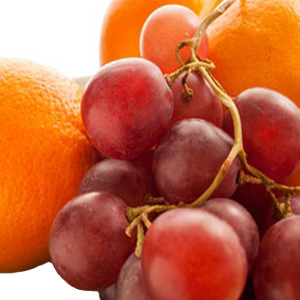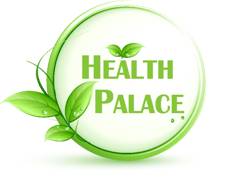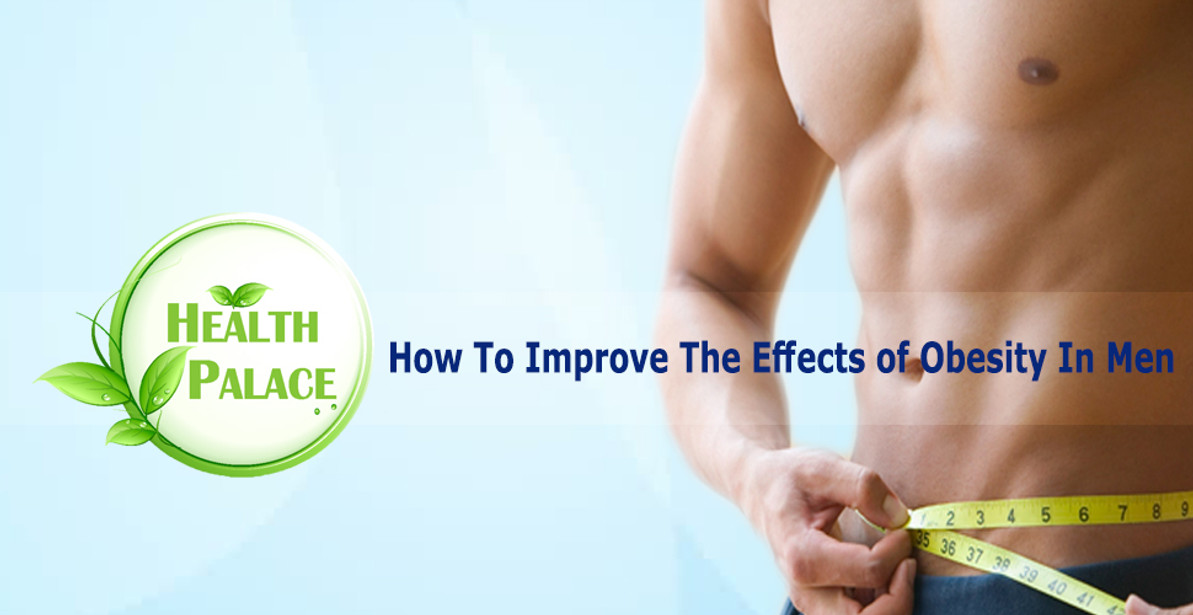Men's Health Supplements for Weight Loss | 10 Best Supplements for Weight Loss for Men
Obesity is common worldwide and it has doubled during the past two decades among men. Obesity is associated with different health problems which altogether referred to as metabolic syndrome. Insulin resistance is a key element to metabolic syndrome. Insulin resistance is related to many factors such as lifestyle, aging, eating habits, poor digestion, and hormones. Increasing concerns in this area of health has initiated many scientific research to explore the causes of the obesity and its relation to other major health problems. Researcher have been looking at wide range of aspects that could influence weight gain from genetic to mood, and sedentary lifestyle.
Men mainly gather weight around the waist, where it circulates through the liver impacting metabolism of nutrients which commonly demonstrate itself through fatty liver, diabetes, and disturbance in hormone production.
What are the main causes of weight gain in men?
Often weight gain is justified through reasons such as it runs in my family or we have poor metabolism. While genetic conditions may play a role in developing obesity in a small percentage of the population, it clearly can't be the main cause of recent significant increase in obesity, due to the fact that the human genomic evolution does not take place within short period of two decades. Data from many research suggest that some people are more predisposed to gain more weight than others, while there is no genetic factor in play. In fact, research associates the rapid weight gain in infancy with a higher risk of adult obesity due to the development of metabolic patterns in infancy and childhood that continue to influence the eating habits and metabolism throughout the life.
Statistical studies suggest that commonly men tend to eat much more calorie dense and bigger meal portions in one

sitting. Based on the information from research those participants whom fed bigger meal portions accumulated 5000 more calories than the control group only within 11 days. Although it may be difficult to convince people to eat smaller portions, eating less energy dense meals has shown to make a remarkable difference.
In another study a group of six healthy men who were subjected to eat ~6000 kcal/day of the common U.S. diet [~50% carbohydrate, ~ 35% fat, and ~15% protein] for 1 week while performing no physical activity, rapidly gained 3.5 kg, and within 2-3 days demonstrated the onset of the Insulin resistance due to increased oxidative stress which causes higher oxidation of Glucose Transport Protein ( GLUT4) and therefore loss of its function. This study concluded that excessive caloric intake acutely causes oxidative stress, GLUT4 dysfunction, and insulin resistance in healthy men.
Hormones are also play a role in weight gain. Although low level testosterone can contribute to weight gain, it is important to be aware of misinterpretation that it has caused amongst practitioners and patients. It is essential to separate the low testosterone level due to a disease or condition impacting HPTaxis function (hypothalamic–pituitary–testicular function) from testosterone decline due metabolic factors and aging. It is known that low testosterone level and obesity are linked however in reality which is cause and which is effect?
Insufficient testosterone production due to interruption in the HPTaxis function even in a smaller scale, causes metabolic disease, high fat accumulation, high cholesterol, heart disease, insulin resistance, high blood sugar, diabetes, and obesity. This association of low testosterone with metabolic syndrome is age independent and it might be subtle and gradual with delayed side effects or it could be sudden with immediate manifestation such as changing in mood, and rapid weight gain.
Studies of men undergoing testosterone-lowering androgen deprivation therapies for prostate cancer showed decreased insulin sensitivity and increased body fat mass. In one study, more than 50% of men undergoing long-term androgen deprivation therapy developed the metabolic syndrome, manifested in particular by increased abdominal obesity and elevated blood sugar.
Other point of view suggests that obesity comes first, and low testosterone is simply the result. That is true, because fat tissue is an extremely active hormonal modulator, particularly for testosterone and estrogen. Fatty tissue increases aromatase enzyme activity which converts the testosterone into estradiol resulting in lower levels of testosterone.
Aromatase, also called estrogen synthetase, and it is a key enzyme is biosynthesis of estrogen. Particularly aromatase is responsible for converting androgen into estrogen. The aromatase can be found in various tissues including gonads, brain, fat tissue, blood vessels, skin, and bone. Certain factors are known to increase aromatase activity such as aging, obesity, and alcohol.

Aging makes it more difficult to lose weight. Because naturally the testosterone production is decreased, while the aromatase activity has increased contributing to more reduction in testosterone. As a result, during andropause body accumulates more of deep abdominal fat tissue, and gradually inflammatory markers increase initiating metabolic disease.
Testosterone replacement has increasingly being offered to older men with age-related decline in testosterone levels. Studies have examined the effects of long-term testosterone replacement and aromatase inhibition (AI) on glucose metabolism and other cardiovascular markers.
In a randomized double blind pelacebo-controlled trial, older non-diabetic men (age 65-73) with low testosterone levels were treated either with Trans-dermal Testosterone or Aromatase Inhibitor for the period of 12 months. Results showed the abdominal subcutaneous fat and Leptin level were significantly lower in aromatase inhibitor group, while the fasting lipids and inflammatory marker C-reactive protein (CRP) remained similar to the control group for both treatments.
Other studies have assessed the compared the effects of short-term aromatase inhibition on glucose metabolism, lipid profile, and adipo-cytokine levels (inflammatory markers) in young and elderly men. Short-term aromatase inhibition appears to affect glucose metabolism in young men, and lipid metabolism, including leptin secretion, in both young and elderly men.
How to improve and maintain healthy weight in men?
Repeated overeating can be a major source of excess calories that may lead to weight gain. Also, Studies are shown that even short term overeating impairs the insulin effect. Over eating causes the brain not to respond to normal amounts insulin which is known as insulin resistance condition. This initiates the path to diabetes, metabolic syndrome and obesity. Implementing low calorie dense foods, higher intake of fibre and lean protein are proven steps to stabilize the insulin level and prevent he insulin resistance condition.
Compelling amount of data suggest that there is link between stress and over eating. The stress exposure lead to a stronger drive to eat and may be one factor promoting excessive weight gain. In humans, exposure to stressors and self-reported stress are associated with greater food intake. Higher levels of stress, both exposure and perception, was associated with greater desire to eat-including feelings of dis-inhibited eating, binge eating, hunger, and more ineffective attempts to control eating.
L teanine is an amino acid derived from green tea. L-theanine is shown various benefits for human health. Based on many human studies L-theanine can be used to treat nutritional and metabolic diseases by providing antiobesity effects, suppressing the body weight increases and fat accumulation and exerting antidiabetic effects. L Theanine is able to cross the blood–brain barrier and reduces mental and physical stress.
Declining testosterone levels are linked to a steady rise in inflammatory markers such as C-reactive protein (CRP). Inflammation plays a critical role in development of obesity. Inflammation is also involved in insulin resistance and type 2 diabetes. Simultaneously, higher fat tissue formation due to the testosterone deficiency creates more of the inflammatory cytokine which further enhaces the cycle of inflammation, insulin resistance, and cardiovascular disease that constitutes the metabolic syndrome.
Reduced testosterone levels due to its lower production and an increase in its conversion to unwanted estrogen with age may be one of the reasons to promote weight gain in men at or beyond middle age. Therefore avoiding estrogenic factors such as soy milk and estrogenic toxins, and eliminating the aromatase activating factors such as alcohol and inflammation, and boosting the aromatase inhibition is found to be effective.
To date a large number of natural product metabolites, of various compound classes, have been evaluated for their ability to inhibit the aromatase enzyme. Cellular and in vivo aromatase inhibition methods are commonly used to biologically evaluate some of these natural product. Natural aromatase inhibitors have been the object of growing attention in recent years because of their potential to inhibit aromatase with fewer side effects.

Resveretrol rich foods and supplements are found to effectively reduce the activity of the aromatase enzyme. Cell studies have shown that resveratrol can inhibit the production of gene-toxic estradiol and and prevents damage to genetic material. Trans-Resveratrol is reportedly has shown many health benefits including anticarcinogenic effects and protection against cardiovascular disease.
One of the mechanisms by which resveratrol works is via modulating the estrogen response systems. Resveratrol is studied for its beneficial effects on the men's health, because estrogen is involved in male reproductive biology. Animal studies were indicative of significantly higher serum concentrations of gonadotrophins and testosterone in the resveratrol-treated group.
Dietary flavonoids such as flavones and flavonones are shown to provide high aromatase-inhibitory function. One of the most powerful flavones include chrysin which is found in passionflower and apignine which is found in chamomile.
Flavonones are found in citrus fruits and specially in lemons and limes. They are classically known as citrus bioflavonoids including diosmin, hesperidin, rutin, naringin, tangeretin, diosmetin, narirutin, neohesperidin, nobiletin and quercetin.
Cruciferous vegetables such as broccoli, cauliflower, kale, brussel sprouts, are all natural aromatase inhibitors. Cruciferous veggies are rich in a compound called 3,3′-Diindolylmethane (DIM) and Indole-3 Carbonyl (I3C) . DIM is a metabolite of I3C. DIM is not only a powerful aromatase inhibitor, but also effectively metabolizes estrogen molecules and helps the liver to remove them.
Zinc is one of the powerful aromatase inhibitors. Studies have found those with Zinc deficiency have more estrogen receptor sites.These findings are indicative of that the zinc deficiency causes lower levels of circulating luteinizing hormone and testosterone concentrations, alters hepatic steroid metabolism, and modifies the estrogen and testosterone hormone receptor levels.
Healthy fats including Omega 3s, olive oil, and raw nuts are protecting against estrogens. Raw nuts and Olive oil are rich in plant sterols that support testosterone production in men. Sterols may also protect against prostate enlargement. Omega 3 fatty acids include DHA and EPA which provide anti-inflammatory benefits that can reduce the pro inflammatory affects of estrogen.
Natural compound called honokiol sourced from the bark and leaves of magnolia tree and found to be able to modulate the testosterone level in men. In vitro tests identified this compound as a very effective inhibitor of aromatase. Honokiol is commonly taken orally. There are a number of supplements available containing honokiol known as relora.
Honokiol is able to pass the blood-brain barrier, it is highly bio-available and provides several therapeutic benefits and it is used for a number of conditions related to central nervous system, cardiovascular system, and gastrointestinal system. It has been shown to have anti-tumor, anti-inflammatory, and antioxidant effects as well.
Including foods such as Cruciferous vegetables inculding broccoli, cauliflower, cabbage, brussels sprouts, cauliflower, and kale that inhibit aromatase is one of the best things to maintain healthy testosterone levels.
Complementing the daily routines with aromatase inhibiting supplements will help to increase availability of the natural testosterone that the body produces resulting is more bio-available testosterone in your body, and increased health.
Keeping stress whether its perceptional or due to external factors under control, getting to exercise, reducing the rich high calorie diet, and avoiding estrogenic foods and toxins will maximize the results with added benefits.
Articles and products featured by Health Palace are collected from a variety of sources and are provided as a service by Health Palace. These newsletters, while of potential interest to readers, do not necessarily represent the opinions nor constitute the advice of Health Palace. Presented materials are only for information purposes and do not intent to treat, cure, or prevent any disease.
Related Articles:
- Keep a Healthy Testosterone Level in Adult Men
- How to Maintain and Restore Healthy Blood Lipids Level
- Simple yet Important Nutrients Men Should Include in Their Daily Routine
- How Chronic Stress Affects Men's Health
Select References:
1.Eating and dieting differences in men and women
2.Ingrid Kiefer, PhD.; Theres Rathmanner, MSc.; Michael Kunze, MD. Institute of Social Medicine, Center of Public Health, Medical University Vienna, Austria; DOI: doi.org/ 10.1016/j.jmhg.2005.04.010.
3.George L. Blackburn, MD, PhD, Division of Nutrition, Harvard Medical School. Barbara Rolls, PhD, Department of Nutritional Sciences, Penn State University. Claude Bouchard, PhD director, Pennington Biomedical Research Center, Louisiana State University. Nicolas Stettler, MD, MSCE, University of Pennsylvania.
4.Rolls, B. The Volumetrics Eating Plan: Techniques and Recipes for Feeling Full on Fewer Calories, Morrow Cookbooks, 2005.
5.Young, L. and Nestle, M. American Journal of Public Health, 2002; vol 92: pp 246-249.
6.Centers for Disease Control and Prevention, National Center for Health Statistics: “Prevalence of Overweight and Obesity Among Adults. Ogden C. et al, JAMA, April 5, 2006; vol 295(13): pp 1549-1555.
7.Bouchard, C. et al, New England Journal of Medicine, May 24, 1990; vol 322(21): pp 1477-1482. Ello-Martin, J . et al, American Journal of Clinical Nutrition, 2005; vol 82(suppl): pp 236S-241S.
8.Excessive caloric intake acutely causes oxidative stress, GLUT4 carbonylation, and insulin resistance in healthy menGuenther Boden, Carol Homko , Carlos A. Barrero, T. Peter Stein, Xinhua Chen, Peter Cheung, Chiara Fecchio, Sarah Koller, Salim Merali. Science Translational Medicine 09 Sep 2015: Vol. 7, Issue 304, pp. 304re7. DOI: 10.1126/scitranslmed.aac4765.
9.L. Plari, E, Yatkin, M.G. Martinez Chacon, M. Ahotupa, A.Smeds, L.Strauss, F.Zhang, M.Poutanen, N.Saarinen, S.I.Makela, Weight gain and inflammation regulate aromatase expression in male adipose tissue, as evidenced by reporter gene activity.a.Functional Foods Forum, University of Turku, Turku, Finland;b.Turku Center for Disease Modeling, Institute of Biomedicine, University of Turku, Turku, Finland; c.Research Centre of Applied and Preventive Cardiovascular Medicine, University of Turku, Turku, Finland;d. Åbo Akademi University, Process Chemistry Centre, Laboratory of Wood and Paper Chemistry, Turku, Finland;e.Department of Physiology, Institute of Biomedicine, University of Turku, Finland. Received 19 February 2015, Revised 11 May 2015, Accepted 1 June 2015.
10.Clare L Adam , Patricia A Williams, Matthew J Dalby, Karen Garden, Lynn M Thomson, Anthony J Richardson, Silvia W Gratz, Alexander W Ross.Different types of soluble fermentable dietary fibre decrease food intake, body weight gain and adiposity in young adult male rats; Nutrition & Metabolism201411:36. Doi.org/10.1186/1743-7075-11-36. Adam et al.; licensee BioMed Central Ltd. 2014.
11.Adrology 2017 Jan;5(1):31-40. doi: 10.1111/andr.12284. Epub 2016 Oct 28. Testosterone vs. aromatase inhibitor in older men with low testosterone: effects on cardiometabolic parameters.
12.Dias JP, Shardell MD, Carlson OD, Melvin D, Caturegli G, Ferrucci L, Chia CW, Egan JM, Basaria S.
13.T'sjoen GG, Giagulli VA, Delva H, Crabbe P, De Bacquer D, Kaufman JM. Comparative assessment in young and elderly men of the gonadotropin response to aromatase inhibition. J Clin Endocrinol Metab. 2005;90:5717–5722. doi: 10.1210/jc.2005-0982.
14.Falahati-Nini A, Riggs BL, Atkinson EJ, O'Fallon WM, Eastell R, Khosla S. Relative contributions of testosterone and estrogen in regulating bone resorption and formation in normal elderly men. J Clin Invest. 2000;106:1553–1560. doi: 10.1172/JCI10942.
15.Tchernof, A., & Després, J. (2007). Sex Steroid Hormones, Sex Hormone-Binding Globulin, and Obesity in Men and Women Hormone and Metabolic Research, 32 (11/12), 526-536 DOI: 10.1055/s-2007-978681.
16.Pouliot, M., Despres, J., Nadeau, A., Moorjani, S., Prud'Homme, D., Lupien, P., Tremblay, A., & Bouchard, C. (1992). Visceral Obesity in Men: Associations With Glucose Tolerance, Plasma Insulin, and Lipoprotein Levels Diabetes, 41 (7), 826-834 DOI: 10.2337/diab.41.7.826.
17.Grantham, J., & Henneberg, M. (2014). The Estrogen Hypothesis of Obesity PLoS ONE, 9 (6) DOI: 10.1371/journal.pone.0099776.
18.Wang, C., Jackson, G., Jones, T., Matsumoto, A., Nehra, A., Perelman, M., Swerdloff, R., Traish, A., Zitzmann, M., & Cunningham, G. (2011). Low Testosterone Associated With Obesity and the Metabolic Syndrome Contributes to Sexual Dysfunction and Cardiovascular Disease Risk in Men With Type 2 Diabetes Diabetes Care, 34 (7), 1669-1675 DOI: 10.2337/dc10-2339.
19.Tan, R., & Pu, S. (2003). A pilot study on the effects of testosterone in hypogonadal aging male patients with Alzheimer's disease The Aging Male, 6 (1), 13-17 DOI: 10.1080/713604736.
20.Cohen PG (1999). The hypogonadal-obesity cycle: role of aromatase in modulating the testosterone-estradiol shunt--a major factor in the genesis of morbid obesity. Medical hypotheses, 52 (1), 49-51 PMID: 10342671.
21.Yoon, K., Kwack, S., Kim, H., & Lee, B. (2014). Estrogenic Endocrine-Disrupting Chemicals: Molecular Mechanisms of Actions on Putative Human Diseases Journal of Toxicology and Environmental Health, Part B, 17 (3), 127-174 DOI: 10.1080/10937404.2014.882194.
22.Askary, V., Jahan, N., Sabbagh, A., Jahani, F., Dourandish, N., & Kamachali, A. (2011). A potential medicinal importance of zinc in human health and chronic diseases Clinical Biochemistry, 44 (13) DOI: 10.1016/j.clinbiochem.2011.08.795.
23.Spark RF. Testosterone, diabetes mellitus, and the metabolic syndrome. Curr Urol Rep. 2007 Nov;8(6):467-71.
24.Dhindsa S, Miller MG, McWhirter CL, et al. Testosterone concentrations in diabetic and nondiabetic obese men. Diabetes Care. 2010 Jun;33(6):1186-92.
25.Lunenfeld B. Testosterone deficiency and the metabolic syndrome. Aging Male. 2007 Jun;10(2):53-6.
26.Chen RY, Wittert GA, Andrews GR. Relative androgen deficiency in relation to obesity and metabolic status in older men. Diabetes Obes Metab. 2006 Jul;8(4):429-35.
27.Zumoff B. Hormonal abnormalities in obesity. Acta Med Scand Suppl. 1988;723:153-60.
28.Nuver J, Smit AJ, Wolffenbuttel BH, et al. The metabolic syndrome and disturbances in hormone levels in long-term survivors of disseminated testicular cancer. J Clin Oncol. 2005 Jun 1;23(16):3718-25.
29.Muller M, Grobbee DE, den Tonkelaar I, Lamberts SW, van der Schouw YT. Endogenous sex hormones and metabolic syndrome in aging men. J Clin Endocrinol Metab. 2005 May;90(5):2618-23.
30.Kapoor D, Malkin CJ, Channer KS, Jones TH. Androgens, insulin resistance and vascular disease in men. Clin Endocrinol (Oxf). 2005 Sep;63(3):239-50.
31.Rice D, Brannigan RE, Campbell RK, et al. Men’s health, low testosterone, and diabetes: individualized treatment and a multidisciplinary approach. Diabetes Educ. 2008 Nov-Dec;34 Suppl 5:97S-112S; quiz 13S-4S.
32.Rabijewski M, Papierska L, Kozakowski J, Zgliczynski W. The relationship between androgens concentrations (testosterone and dehydroepiandrosterone sulfate) and metabolic syndrome in non-obese elderly men. Endokrynol Pol. 2007 Nov-Dec;58(6):496-504.
33.Blouin K, Despres JP, Couillard C, et al. Contribution of age and declining androgen levels to features of the metabolic syndrome in men. Metabolism. 2005 Aug;54(8):1034-40.
34.de Ronde W. Therapeutic uses of aromatase inhibitors in men. Curr Opin Endocrinol Diabetes Obes. 2007;14:235–240. doi: 10.1097/MED.0b013e328121aad2.
35.Longcope C, Pratt JH, Schneider SH, Fineberg SE. Aromatization of androgens by muscle and adipose tissue in vivo. J Clin Endocrinol Metab. 1978;46:146–152. doi: 10.1210/jcem-46-1-146.
36.MacDonald PC, Madden JD, Brenner PF, Wilson JD, Siiteri PK. Origin of estrogen in normal men and in women with testicular feminization. J Clin Endocrinol Metab. 1979;49:905–916. doi: 10.1210/jcem-49-6-905.
37.Dr. Buettner. Overeating impairs brain insulin function, a mechanism that can lead to diabetes and obesity. October 17, 2012. Mount Sinai Medical Center.
38.Eur J Endocrinol. 2009 Mar;160(3):397-402. doi: 10.1530/EJE-08-0881. Epub 2008 Dec 2. Short-term aromatase inhibition: effects on glucose metabolism and serum leptin levels in young and elderly men.
39.Lapauw B, T'Sjoen G, Mahmoud A, Kaufman JM, Ruige JB.
40.Zheng G., Sayama K., Okubo T., Juneja L. R., Oguni I. Anti-obesity effects of three major components of green tea, catechins, caffeine and theanine, in mice. In Vivo. 2004;18(1):55–62.
41.Sayama K., Lin S., Zheng G., Oguni I. Effects of green tea on growth, food utilization and lipid metabolism in mice. In Vivo. 2000;14(4):481–484.
42.Takagi Y., Kurihara S., Higashi N., et al. Combined administration of L-cystine and L-theanine enhances immune functions and protects against influenza virus infection in aged mice. Journal of Veterinary Medical Science. 2010;72(2):157–165. doi: 10.1292/jvms.09-0067.
43.Matsumoto K., Yamamoto S., Yoshikawa Y., et al. Antidiabetic activity of Zn(II) complexes with a derivative of L-glutamine. Bulletin of the Chemical Society of Japan. 2005;78(6):1077–1081. doi: 10.1246/bcsj.78.1077. .
44.Kajiwara N., Yoshikawa Y., Yasui H., Matsumoto K. Experimental observations of anti-diabetic activity of zinc complexes with theanine. Annals of Nutrition and Metabolism. 2013;63:1632–1632.
45.Dandona P, Dhindsa S, Chaudhuri A, Bhatia V, Topiwala S, Mohanty P. Hypogonadotrophic hypogonadism in type 2 diabetes, obesity and the metabolic syndrome. Curr Mol Med. 2008 Dec;8(8):816-28.
46.Traish AM, Saad F, Guay A. The dark side of testosterone deficiency: II. Type 2 diabetes and insulin resistance. J Androl. 2009 Jan-Feb;30(1):23-32.
47.Juan ME, González-Pons E, Munuera T, Ballester J, Rodríguez-Gil JE, Planas JM. J Nutr. 2005 Apr;135(4):757-60 trans-Resveratrol, a natural antioxidant from grapes, increases sperm output in healthy rats. ncbi.nlm.nih.gov/pubmed/15795430.
48.Groesz LM1, McCoy S, Carl J, Saslow L, Stewart J, Adler N, Laraia B, Epel E.. What is eating you? Stress and the drive to eat. Appetite. 2012 Apr;58(2):717-21. doi: 10.1016/j.appet.2011.11.028. Epub 2011 Dec 4. ncbi.nlm.nih.gov/pubmed/22166677.
49.Zahid M, Gaikwad NW, Ali MF, Lu F, Saeed M, Yang L, Rogan EG, Cavalieri EL.Free Radic Biol Med. 2008 Jul 15;45(2):136-45. doi: 10.1016/j.freeradbiomed.2008.03.017. Epub 2008 Apr 8. Prevention of estrogen-DNA adduct formation in MCF-10F cells by resveratrol. ncbi.nlm.nih.gov/pubmed/18423413.
50.Marcy J. Balunas, Bin Su, Robert W. Brueggemeier. and A. Douglas Kinghorm. Anticancer agents Med chem.2008 Aug;8(6):646-682. Natural Products as Aromatase Inhibitors. ncbi.nlm.nih.gov/pmc/articles/PMC3074486/.
51.Om AS, Chung KW. J Nutr. 1996 Apr;126(4):842-8. Dietary zinc deficiency alters 5 alpha-reduction and aromatization of testosterone and androgen and estrogen receptors in rat liver. ncbi.nlm.nih.gov/pubmed/8613886.
52.Bernard P., Scior T, DO QT Clin Interv Aging. 2012;7:351-61. doi: 10.2147/CIA.S34034. Epub 2012 Sep 13. Modulating testosterone pathway: a new strategy to tackle male skin aging? ncbi.nlm.nih.gov/pubmed/23049247.
53.Mauro De Santi, Elisa Carloni, Luca Galluzzi, Aurora Diotallevi, Simone Lucarini, Mauro Magnani, Giorgio Brandi.J.Anti-Cancer Agents in Medicinal Chemistry. Volume 15 , Issue 7 , 2015 DOI : 10.2174/1871520615666150121123053
54.Woodbury, Anna; Yu, Shan Ping; Wei, Ling; García, Paul (2013). "Neuro-Modulating Effects of Honokiol: A Review". Frontiers in Neurology. 265 (7): 4111 5. doi:10.3389/fneur.2013.00130. PMID 2406271.
55.Fried, Levi E.; Arbiser, Jack L. (2009). "Honokiol, a Multifunctional Antiangiogenic and Antitumor Agent". Antioxidants & Redox Signaling. 11 (5): 1139 48. doi:10.1089/ars.2009.2440. PMC 2842137 . PMID 19203212.
56.Guerra-Araiza, Christian; Álvarez-Mejía, Ana Laura; Sánchez-Torres, Stephanie; Farfan-García, Eunice; Mondragón-Lozano, Rodrigo; Pinto-Almazán, Rodolfo; Salgado-Ceballos, Hermelinda (2013). "Effect of natural exogenous antioxidants on aging and on neurodegenerative diseases". Free Radical Research. 47 (6–7): 451 62. doi:10.3109/10715762.2013.795649. PMID 23594291.
57.Petr Hodek,
Pavel Trefil, Marie Stiborova. Flavonoids-potent and versatile biologically
active compounds interacting with cytochromes P450.
doi.org/10.1016/S0009-2797(01)00285-X.
Recent Posts
-
Maintain A Healthy Heart Rhythm With Integrative Medicine
Maintain A Healthy Heart Rhythm With Integrative Medicine;Usually, abnormal heart rate or arrhythmi …4th Feb 2021 -
How To Protect Against COVID-19
Coronaviruses are a large group of viruses that cause many common human and animal infections. In hu …30th Jun 2020 -
How to Prevent Gallstones from Forming? | Natural Supplements for Gallstones
How To Prevent Gallstone Formation?Gallstones are hard deposits made of cholesterol or bilirubin f …4th Mar 2020




